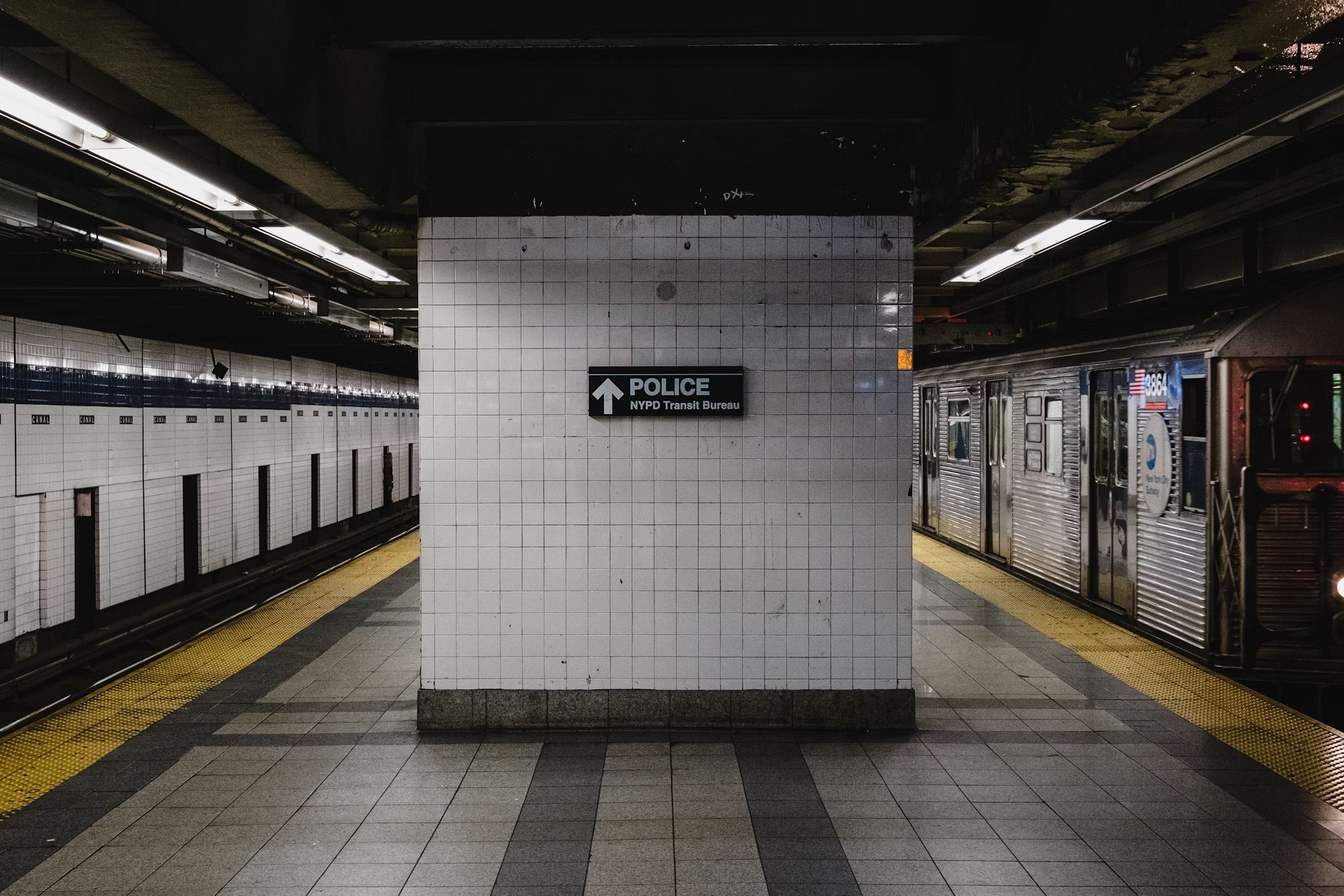What happens when the police watch the subways
What effect does increased police presence have on our minds?
Kohava Mendelsohn • October 30, 2024

Police brutality and increased police presence lead to heightened vigilance by Black adults, which has mental health consequences. [ Credit: Billy Williams | Unsplash ]
In March 2024, New York Governor Kathy Hochul announced that the National Guard would join the nearly 1,200 Metropolitan Transportation Authority (MTA) Police to conduct bag checks and deter criminals from New York City subways. Now, the view of Grand Central Station’s breathtaking entrance is broken up by guardsmen in uniform with their guns in holsters. Everyday commuters can be pulled aside for a bag check at any time. If you refuse, you can’t ride the train.
These efforts are meant to combat crime in New York City subways. In the February prior to Gov. Hochul’s announcement, two shootings and an assault of a transit officer received press coverage. In 2023 overall, 570 assaults were reported on the subways — the highest in 27 years. However, crime rates on transit in New York City overall are decreasing compared to previous years, with a 2.6% decrease in transit crimes from 2022 to 2023.
Increased police presence deters crime by making criminals feel observed. That feeling of observation puts people on their best behavior, some research indicates. But what about people who don’t feel safe around police in the first place?
Research on increasing the presence of police to reduce crime rates is mixed. Some studies have shown that increased police presence reduces crimes while other investigations have found little correlation between high policing and reduced crime. A 2022 study in “American Economic Review: Insights” found that for every 10 to 17 additional officers hired by the police, an additional life was saved. But “it really depends on what police are doing,” says Justin Nix, a professor of criminology at the University of Nebraska Omaha. “When police are focused on problematic places, particular problems and people who are most at risk, right—people, problems and places—they tend to have more of an effect than simply sitting back and waiting on 911 calls to come in.”
It is also true that human behavior changes when we are being watched.
In 2006, a study from the University of Newcastle found that people were more honest and charitable when being watched. Signs with eyes on them reduced theft in a 2012 study from that same university. (The eyes on the Chambers Street Subway Station may unintentionally serve this purpose — but they are actually intended as an art exhibition.) “It is plausible that if we think we’re being watched we might behave,” Tom Stafford, who teaches psychology and cognitive science at the University of Sheffield, told Atlas Obscura.
That feeling of being watched by the police can also make people feel safer. Matteo Biasin, a 51-year-old chemical engineer, told the New York Times that with the addition of bag checks, “I feel safer in the subway than outside.” A 2015 study from Sweden showed that feelings of safety increase in the presence of police.
But that’s not the whole story. Some residents are against increased police and National Guard presence in subways. Daniela Blini, a Bushwick local, doesn’t feel safer. “It terrifies me that these men have these automatic gun machines,” she told Gothamist.
Increased police presence can also make people more aware of crimes, so they feel less safe. “When I see surveillance cameras in an area, it makes me feel like, oh, there are cameras here. There must be a reason for that. This area must be unsafe,” explained Colin Ellard, a neuroscientist at the University of Waterloo in Canada.
Adding police presence to combat crime brings other consequences. The New York Civil Liberties Union (NYCLU) called Gov. Hochul’s announcement “whiplash-inducing,” in a press release, stating “These heavy-handed approaches will, like stop-and-frisk, be used to accost and profile Black and Brown New Yorkers.”
Black people are about three times more likely to be killed by the police as white people, they are four times more likely to be injured, and emotional and sexual harms from police are higher for Black women than white women, according to a 2022 study published by the American Psychological Association. “Black people are more likely to be killed by police,” says Nix. “That’s a fact that’s not really up for dispute anymore.”
This study also found evidence that heightened vigilance of police brutality was associated with worse mental health outcomes in Black adults. The knowledge that, as a Black person, one is in greater danger from the police creates hypervigilance in public spaces to avoid negative encounters with the police.
A Howard University School of Law report on police brutality and mental health found that the constant threat of police violence has “tremendous” impacts on mental health. Brock Chisholm, a clinical psychologist who studies surveillance, told Vice that our reaction to surveillance is similar to that of other animals: A baby rat being watched by its mother will feel comforted and safe. A baby rat being watched by a predator would feel stressed and threatened. The same is true for people. When being watched by the police, Joi Smith, a Black reporter for YR Media, says, “My body tenses up, and you’d think I just committed the worst crime. But I’ve done nothing wrong. This is my body’s reflex to being watched, and it’s happening too often. … I wonder why I get this feeling? Maybe because I feel police always assume the worst about me and my friends.”